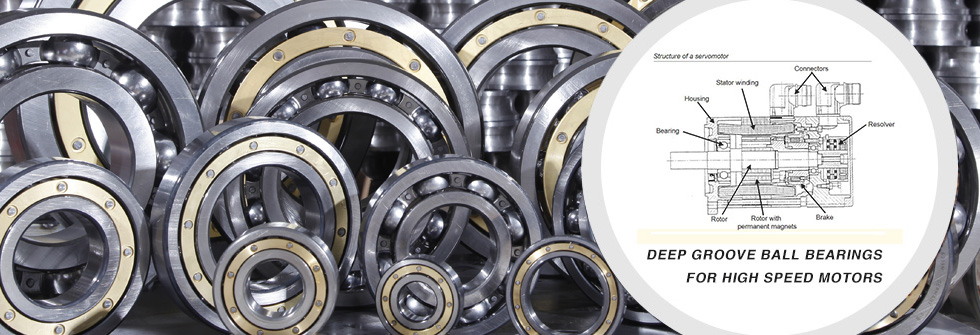Bearing Noise and Vibration
2016-05-19Bearing rings and balls are not perfectly round and the balls and raceways, even after extensive fine grinding and polishing, are not perfectly smooth. There are machining imperfections in the form of rough or uneven surfaces which will cause one ring to move or oscillate radially in relation to the other. The amount and speed of this movement contributes to the amount of bearing vibration and bearing noise. The smoothness or quietness of a bearing can be checked by accelerometers which measure bearing vibration at the outer ring, usually with the inner ring rotating at 1800 rpm. To understand how bearing vibration is measured, it is important to understand how vibration works. When measuring bearing vibration, we need to take into account both displacement and frequency as these two factors together tell us far more.
The amount of oscillation in a vibrating object is called displacement. When a bearing outer ring vibrates, the outer surface will move upwards to the upper limit, then down to the lower limit and then back to the start point. The measurement between upper and lower limit is called peak to peak displacement. The whole oscillation movement from start point through upper and lower limits and back to start point is called a cycle. This vibration cycle will repeat as long as the bearing is rotating. We can also measure the number of these cycles in a given time. This gives us the frequency. Frequency is most commonly expressed as cycles per second (CPS) or Hertz (Hz) which is the same thing.
Vibration is potentially damaging to a bearing and the equipment it is used in, increasing the rate of fatigue and shortening bearing life. Displacement measurements do not tell us enough. Vibration in a bearing or a machine will usually occur at many different frequencies and they all contribute to fatigue so we need to take all of these frequencies of vibration into account in our measurements of vibration. We can achieve this by measuring vibration velocity.
Vibration velocity (displacement x frequency) gives us a good indication of the severity of the vibration. If a bearing component is moving a particular distance (displacement) at a particular rate (frequency) it must be moving at a certain speed. The higher the vibration velocity measurement, the noisier the bearing. Vibration velocity is measured on a Bearing Vibration Tester in microns per second or an Anderon Meter in Anderons. One Anderon equals 7.5 microns per second. The readings are separated into three frequency bands: low (50 to 300 Hz); medium (300 to 1800 Hz) and high (1800 to 10000 Hz). Although vibration velocity shows the fatigue potential, vibration force can cause deformation to balls and rings and can be very damaging at high frequencies where velocity readings may be quite low. For this reason we also measure vibration acceleration.
Vibration acceleration is an indication of vibratory force (force = mass x acceleration) and since force is damaging at higher frequencies, vibration acceleration is a useful measurement where a bearing will experience vibration frequencies above 2000 Hz. Vibration acceleration is measured in G (9.81 m/s²) but you will often see these measurements converted to decibels (dB).
A low noise/vibration rating is achieved by paying particular attention to the surface finish of the raceways and balls, the roundness of the rings and balls and correct cage design.
To help reduce noise levels even further, low noise greases are available and the choice is now greater as improved manufacturing techniques mean these greases are more finely filtered and contain fewer, smaller solid particles. These particles generate noise when they pass between the balls and raceway.
External factors such as surrounding vibration can affect bearing noise. Another problem, particularly with smaller and thin-
Linqing Nine Star Bearing Science & Technology Co., Ltd
( Insulated bearing, Hybrid ceramic bearing and Brass cage DGBB)
Follow us via E-mail info@jxkjzc.com; Website www.ninestarbearing.com.











